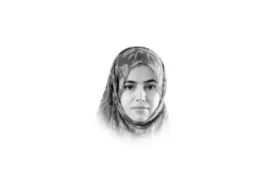
The comments came even as the Pentagon has flagged concerns over an uptick on Syrian government air attacks on rebel forces, and as Panetta cited a growing Iranian role in the Syrian conflict.
This included Iranian efforts to train a militia to fight on behalf of Syrian President Bashar al-Assad's regime, Panetta told reporters at the Pentagon.
Those concerns, however, did not appear enough at this point to signal an active move toward a no-fly zone.
"With regards to the no-fly zone, that is not a front-burner issue for us," Panetta said.
Panetta said his focus was on ensuring that Syria's chemical and biological weapons sites were secure and working with allies to help foster as smooth a transition as possible should Assad fall - something US officials describe as an inevitability.
Assad's former prime minister Riyad Hijab, who defected to the opposition this month, told a news conference on Tuesday that the president controls less than a third of Syria and that his regime was collapsing.
White House spokesman Jay Carney the United States was doing everything it could with its allies to "tighten the noose, if you will, around Assad through diplomatic and financial means, through sanctions and international pressure."
"And you can expect that we'll continue to look for ways to increase the pressure on Assad and deprive Assad of the funds that he depends on to wage war against his own people," he said.
No-fly zone crucial in Libya
The imposition of no-fly zones by foreign powers was crucial in helping Libyan rebels overthrow Muammar Gaddafi last year, but it required NATO attacks to destroy Libyan air defenses.
In March testimony to Congress, Panetta warned of potential “severe collateral damage" in establishing a no-fly zone for Syria as the country's air defense systems, which are far more sophisticated than Libya's, were located in populated areas.
At the same March hearing, General Martin Dempsey, chairman of the US military's Joint Chiefs of Staff, warned that Syria had five times more air defense capabilities than had existed in Libya.
Dempsey, speaking at the Pentagon on Tuesday, said Jordan and Turkey had both examined the possibility of a safe haven with which "would probably come some form of no-fly zone."
"But we're not planning anything unilaterally, if that’s what you're asking," he said, just before Panetta said a no-fly zone wasn't a front-burner issue.
Splits among big powers and regional rivalry between Iran and Saudi Arabia have stymied diplomatic efforts to halt the bloodshed in Syria, where opposition sources say 18,000 people have been killed.
Panetta said he and Dempsey shared concerns about Iran’s deepening involvement.
"It is obvious to both General Dempsey and I that Iran is playing a larger role in Syria in many ways, not only in terms of the IRGC, but in terms of assistance, training," Panetta said, referring to Iran's Islamic Revolutionary Guard Corps.
"There's now an indication that they're ... trying to train a militia within Syria to be able to fight on behalf of the regime." Iran has steadfastly supported Assad in his 17-month effort to crush the rebellion in his country and on Tuesday urged Muslim states to show greater unity ahead of a summit of Muslim leaders this week expected to focus on Syria.























COMMENTS
Comments are moderated and generally will be posted if they are on-topic and not abusive.
For more information, please see our Comments FAQ